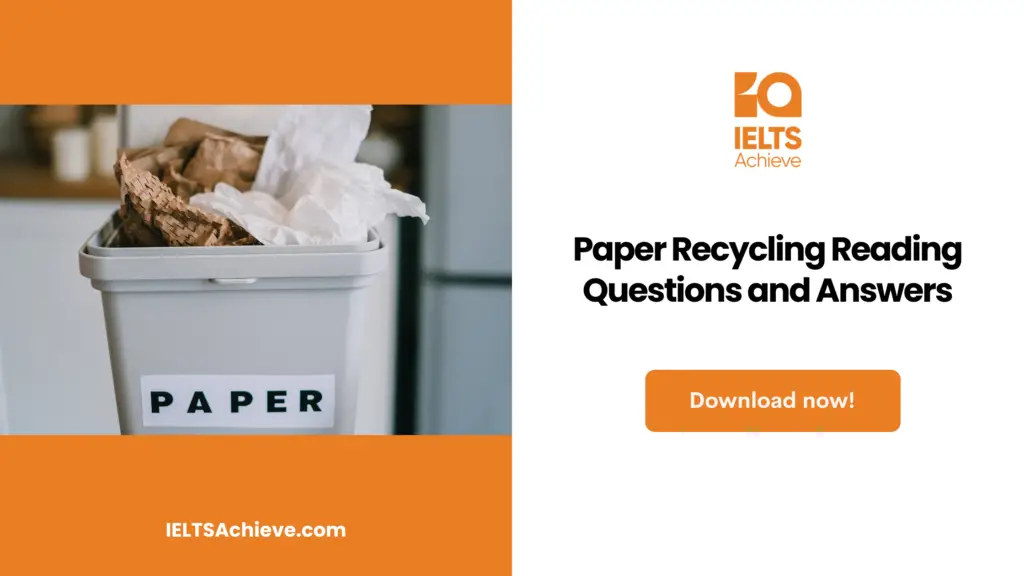The Blog post contains the following IELTS Reading Questions:
- IELTS Reading Summary Completion
- IELTS Reading Multiple Choice Questions
- IELTS Reading Matching Features
Stay informed and prepared for success – Explore our comprehensive Reading Test Info page to get valuable insights, exam format details, and expert tips for mastering the IELTS Reading section.
IELTS Reading Passage: The Birth of Blue

The Birth of Blue
Blue has been the hardest main colour for artists and scientists to generate. Blue has always mesmerised artists, yet excellent blues have been elusive for a very long time. Since blues are very uncommon in nature, painters throughout history have found themselves at the mercy of what modern chemical technology has to offer. Some blues have been costly, while others have been unreliable. Some significant technological innovations have been fueled by the search for a good blue, demonstrating that the interplay between art and science has not always been a one-way process.
The first pigments were merely ground-up coloured minerals that were extracted from the earth. There are no blues in cave art because there aren’t many blue minerals that work well as pigments. However, the reason why blue was used so frequently by ancient Egyptian artists was that they were able to create a fine artificial pigment that is now known as Egyptian blue.
Like the discovery of many other synthetic pigments, Egyptian blue’s discovery was almost certainly an accident. The Egyptians used a method they learned from the Mesopotamians to create blue-glazed stones and ornaments known as faience. In the ancient world, making faience was a lucrative industry; by 1500 BC, it was being traded all over Europe. Stone decorations are heated in a kiln with copper minerals like malachite to create faience. Egyptian blue, which has been produced since at least 2500 BC, is made by fusing chalk or limestone with sand and copper minerals, and is said to have spontaneously formed in a faience kiln.
A different old blue, called Maya blue, which was used for centuries in Central America prior to the Spanish Conquest, has recently been revealed by scientists. This is a particular type of clay, a mineral made of sheets of atoms, with molecules of the indigo blue dye jammed between the sheets. By using indigo in this manner, it is less likely to disintegrate. Since the Mayas, no one has created colours in this manner, and no one is certain of how they did it. Technologists, however, are now interested in using the same technique to create durable pigments from other dyes.
The richest pigment that was available to mediaeval artists was ultramarine, which first appeared in Western art in the thirteenth century. It was created using the blue material lapis lazuli, which had just one known source: the isolated mines of Badakhshan, which are currently located in Afghanistan. The pigment was extremely difficult to make, in addition to the challenge of transporting the material across such long distances. Due to impurities in the stone, lapis lazuli turns yellowish when powdered. The powder needs to be combined with wax to make a dough, then it needs to be continuously kneaded in water to extract the pure blue colour.
Ultramarine may therefore be more expensive than its weight in gold, so medieval artists were very picky about how they used it. Since the Renaissance, painters have yearned for a less expensive, more widely available blue to contrast with ultramarine. Things got better in 1704 when a Berlin-based colour manufacturer by the name of Diesbach found Prussian blue, the first “modern” synthetic pigment. Diesbach was working on a recipe that called for caustic potash in order to create a red pigment. However, Diesbach’s potash was tainted with animal oil, which prevented the synthesis from going as intended. Diesbach made blue instead of red.
The oil had reacted, creating cyanide, an essential component of Prussian blue. Diesbach kept his recipe a secret for a long time, but it was found and published in 1724, at which point anyone could create the colour. By the 1750s, it was only a tenth the price of ultramarine. However, it wasn’t a particularly beautiful blue, and the painters were still unsatisfied. In 1802, when French chemist Louis Jacques Thenard created cobalt blue, they had a better option. The best of all was the 1826 discovery of a process for producing ultramarine itself. In 1824, the French Society for the Encouragement of National Industry offered a reward of 6,000 francs to anyone who could produce synthetic ultramarine at a reasonable cost.
Two years later, Toulouse chemist Jean-Baptiste Guimet won the Prize for demonstrating how to make ultramarine by burning china clay along with soda, charcoal, sand, and sulphur in a furnace. This meant that there was no longer a need to rely on the scarce natural source, and ultramarine eventually evolved into a relatively affordable commercial pigment (known as French ultramarine. As it was initially mass-produced in Paris).
Synthetic ultramarine, which is regarded as the most beautiful blue in the world, rose to prominence in the 1950s. The creation of International Klein Blue by French artist Yyes Klein and Parisian paint producer Edouard Adam is a triumph of contemporary chemistry. When pigments were combined with a liquid binder to create paint, Klein found it disturbing how the richness of the pigments was lost. He discovered with Adams’ assistance that a synthetic resin diluted with organic solvents would preserve this bright texture in the dry paint layer. Klein introduced his new blue in 1957 with a collection of monochromatic paintings, and in 1960 he obtained a patent to safeguard his creation.
Unlock your full potential in the IELTS Reading section – Visit our IELTS Reading Practice Question Answer page now!
Recommended Questions:
Renewable Energy IELTS Reading Question with Answer
The Birth of Blue IELTS Reading Questions
Question 1-4
Complete thе summary below.
Choose NO MORE THAN THREE WORDS frоm thе passage fоr еасh answer.
The colours used in cave paintings and other early art were created by crushing 1………………., but later artists have typically had to rely on the 2………………. of the day for their supply of blue. One of the earliest instances of the widespread use of blue was in 3………………. art. Many more attempts to produce respectable blues have been made throughout the ages, some of which have resulted in important 4…………….
Boost your performance in Summary, Notes, Table, and Flowchart Completion tasks. Click here to explore our detailed guide and learn how to effectively complete summaries, notes, tables, and flowcharts in the IELTS Reading section.
Question 5-6
Choose thе correct letter A, B, C оr D.
5. What was the primary drawback of using ultramarine for mediaeval artists?
A. lt contained а number оf impurities.
B. lt wаѕ excessively expensive.
C. Thе colour wasn’t permanent.
D. Thе preparation process wаѕ hazardous.
6. Prussian blue was discovered as a result of
A. uѕіng thе wrong quantity оf аn ingredient.
B. mixing thе wrong ingredients together.
C. including an ingredient thаt wаѕ impure.
D. uѕіng аn ingredient оf thе wrong colour.
Ready to improve your performance in Multiple Choice Questions (MCQs)? Click here to access our comprehensive guide on how to tackle MCQs effectively in the IELTS Reading section.
Question 7-13
Lооk аt thе descriptions аnd thе types оf blue below. Match еасh description wіth thе type оf blue
7. Created in the first decades of the 19th century……….
8. Produced from a limited supply of a natural resource……
9. Created specifically to keep its depth of colour when used in paint….
10. Was inexpensive to create but had little appeal to artists…..
11. Made using a process that is yet being completely understood….
12. Believed to have been created through a different manufacturing technique…..
13. Came to be produced in huge quantities at a low cost……..
Types оf Blue
A. Egyptian blue
B. Maya blue
C. Ultramarine
D. Prussian blue
E. cobalt blue
F. French ultramarine
G. International Klein Blue
Improve your performance in Matching Features questions by clicking here to access our comprehensive guide. Learn how to match specific features or characteristics with the options provided in the IELTS Reading section.
The Birth of Blue Reading Answers
1. (COLOURED) MINERALS
2. (CHEMICAL) TECHNOLOGY / SCIENCE
3. (ANCIENT) EGYPTIAN
4. TECHNOLOGICAL INNOVATIONS
5. B
6. C
7. E
8. C
9. G
10. D
11. B
12. A
13. F

We hope you found this post useful in helping you to study for the IELTS Test. If you have any questions please let us know in the comments below or on the Facebook page.
The best way to keep up to date with posts like this is to like us on Facebook, then follow us on Instagram and Pinterest. If you need help preparing for the IELTS Test, join the IELTS Achieve Academy and see how we can assist you to achieve your desired band score. We offer an essay correction service, mock exams and online courses.

